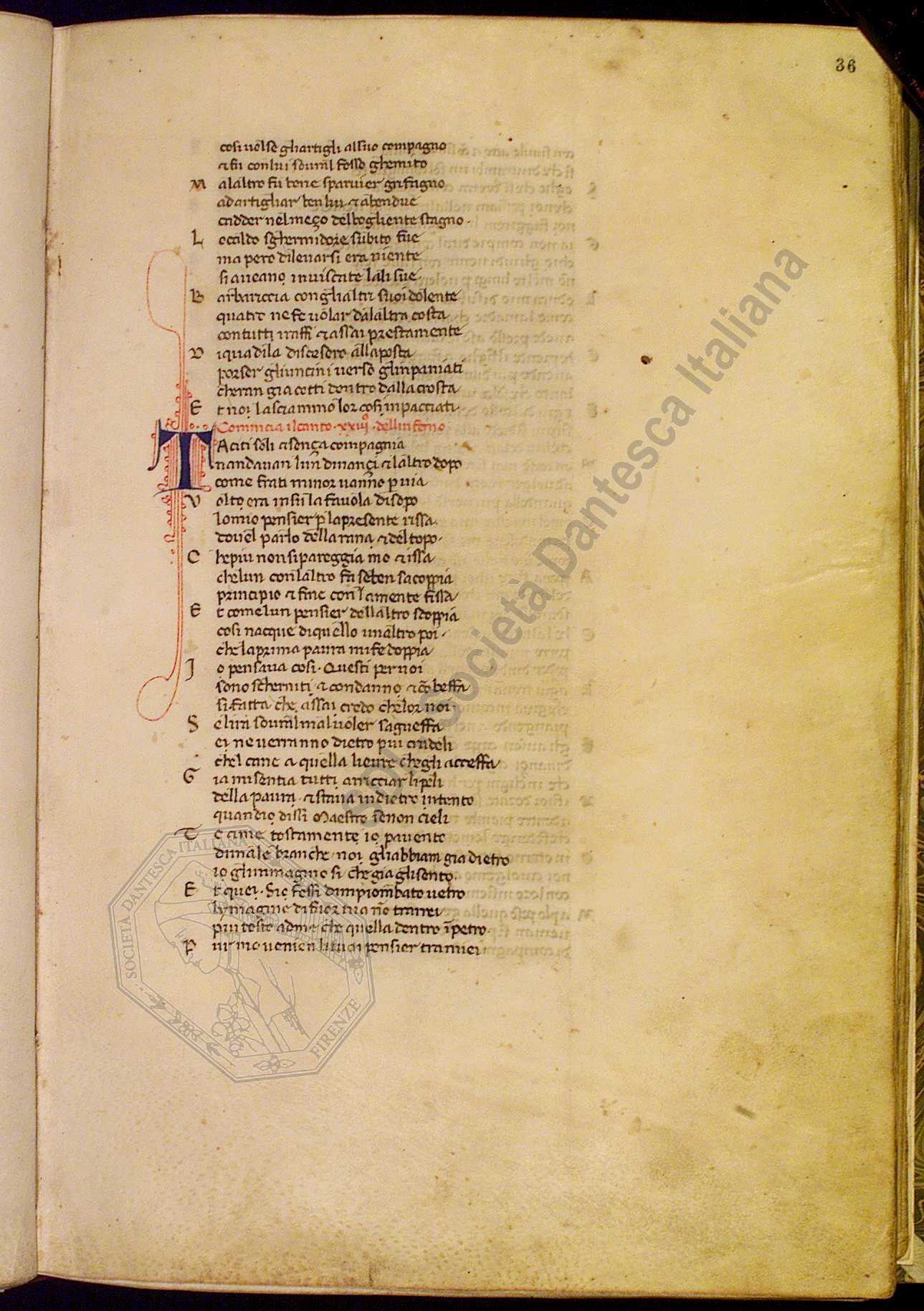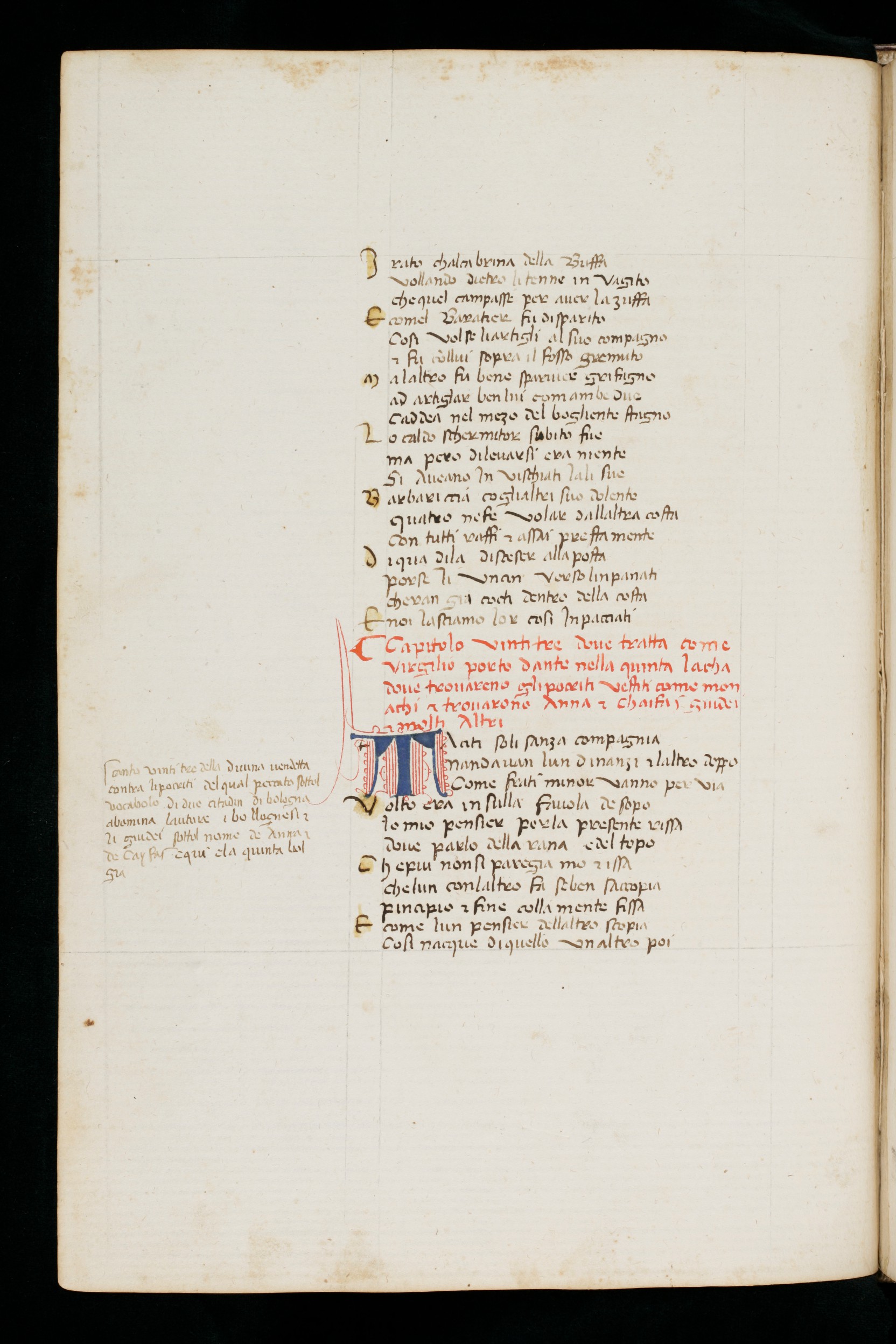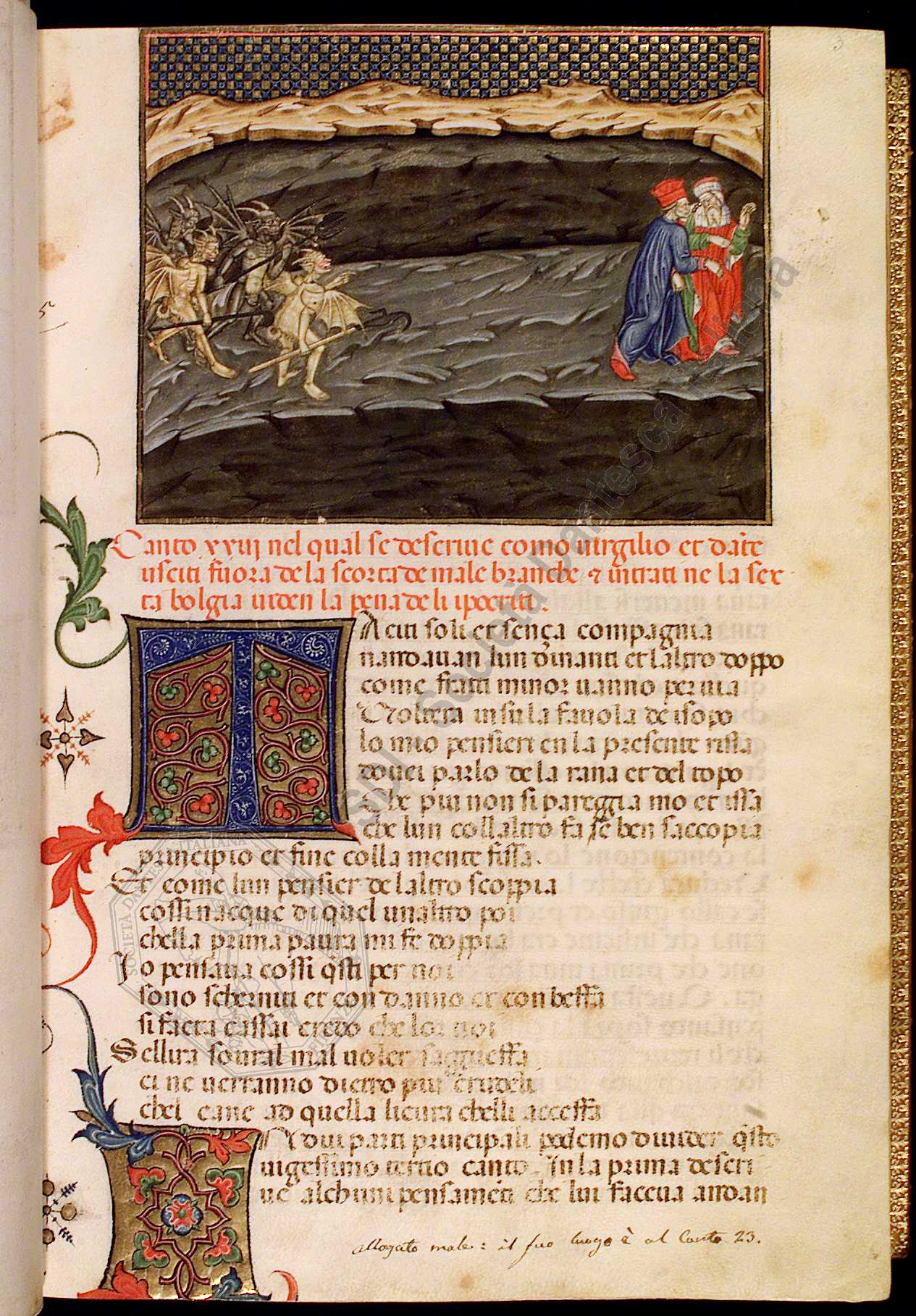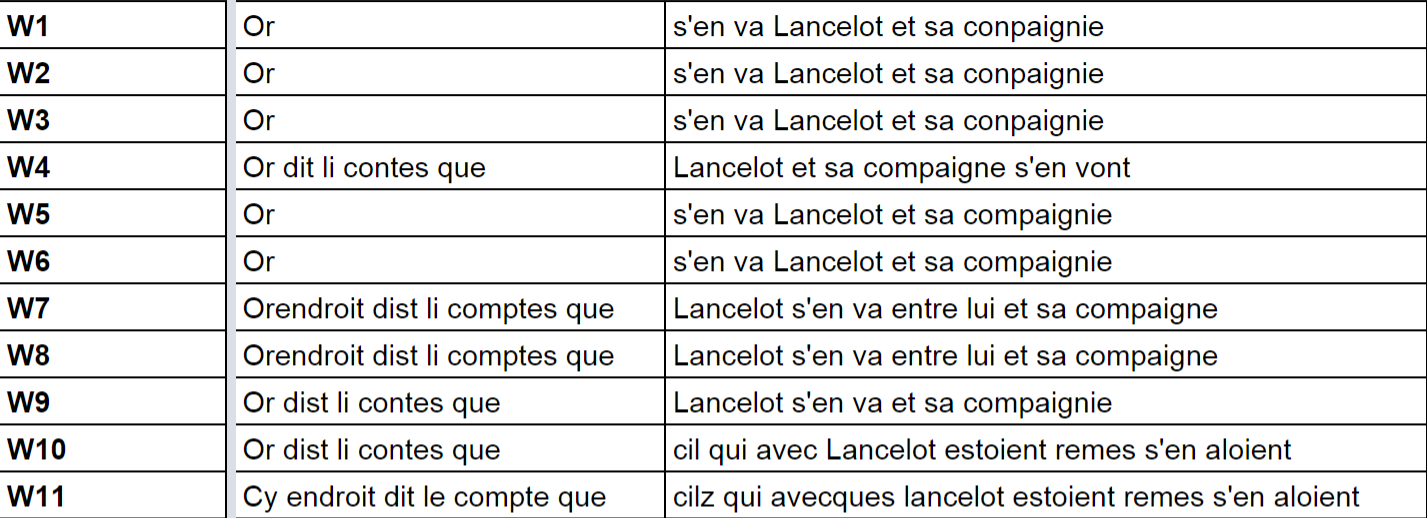ANNOTATING
Document Changes
Collation
Compare and analyse two or more sources of information
Witness
Copy of the work, handwritten or printed
Reading
(A portion of) the text of one witness
When the witnesses have different readings, there is a
textual variation
Dante, Commedia
 XIV century XIV century |
 XV
century XV
century |
 XV
century XV
century |

|
Witness 1: Taciti soli asença compagnia |

|
Witness 2: Taciti soli sança compagnia |

|
Witness 3: Taciti soli et sença compagnia |
Samuel Beckett Digital Manuscript Project
Comparison → where is the difference
Annotation → what is the difference
Case 1
|
W1 and W2 are synonyms, but there is a
lexical difference between them. W1, W2, W6 and W7 have a verb at present tense, while W3 and W4 use the past tense. W6 and W7 are not grammatically correct. W5 is the plural of W1 and W6. W8 may be an error, as it differs only for a single letter. |
Parameters of the annotation
- Portion of the text: letter or word.
- Category of change: addition, deletion, substitution and transposition.
- Linguistic category: spelling, morphosyntax, lexis.
- Specific phenomena: variation in gender, number, case, tense; synonym; dittography, apheresis, gemination ... ... ...
Case 1
Case 2

Case 2
Annotations are stored in a database.
Examples of query
- How many additions, deletions, substitutions and transpositions occur between W1 and W2?
- In which part of the text (sequence) are there more variations?
- How many times W1 and W2 use the same verb, but in a different tense?
- How many times W1 and W2 share a spelling variation?
- How many times W1 and W2 have the same words, but in a different order?
Thanks for your attention.
Elena Spadini
DiXiT Marie Curie fellow
Huygens ING